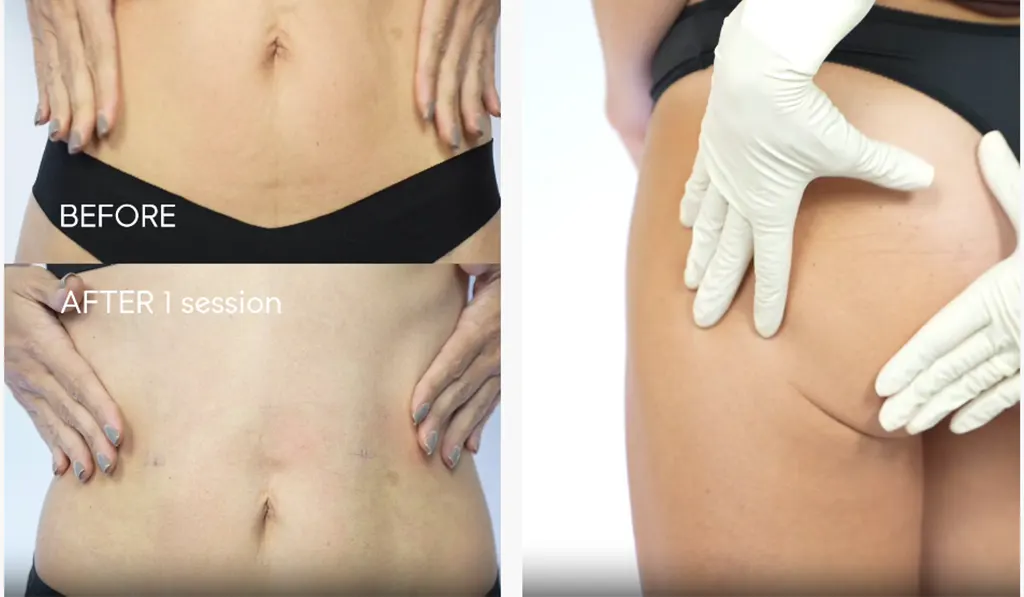Compartment syndrome treatment in Dubai
Compartment syndrome is a painful and potentially fatal condition caused by internal bleeding or swelling in the tissue. It occurs due to elevated pressure in the arm or leg muscle compartment. Injuries, like a fracture, most frequently results in bleeding in the muscle, causing a rise in the muscle’s pressure. The strain inhibits blood flow and damages the muscles and nerves by depriving them of essential nutrients. Emergency surgery is required for serious cases of compartment syndrome. Let us look at the causes, symptoms, risk factors, diagnosis, and treatment of compartment syndrome in detail.
What is compartment syndrome treatment?
Let us first understand what a compartment is. Compartments are made up of groups of muscles, nerves, and blood vessels in the arms and legs. A rigid membrane called a fascia covers and protects these tissues. The fascia’s function is to keep the tissue in place. Therefore, it does not expand easily.
Since the fascia doesn’t spread easily, any bleeding or swelling puts stress on the capillaries, nerves, and muscles in a compartment. As a result, the blood supply is interrupted in muscles and nerve cells. Nerve and muscle cells can get deteriorated without a constant supply of oxygen and nutrients. This leads to compartment syndrome. The affected tissues may fail and ultimately die when left untreated.
Compartment syndrome most commonly occurs in the front compartment (anterior compartment) of the lower leg (calf muscle). It can also happen in other compartments of your leg, arms, buttocks, and feet. Compartment syndrome can occur acutely due to swelling caused by injury, or over a long term (chronic) due to strenuous exercise.
Compartment Syndrome Causes
The root cause of this injury is a rise in pressure that results in swelling or bleeding within the muscles. The compartmental pressure in non-contracting muscles is 0-15 mmHg under normal conditions. When the compartment’s pressure is higher (generally more than 30-45 mmHg or about 30 mm of the diastolic blood pressure), most people develop compartment syndrome. Due to high pressure, blood circulations within these muscles and nerves stop which causes a deficiency of oxygen and nutrients. As a result, you would experience symptoms like pain and swelling.
The most common type of compartment syndrome is acute compartment syndrome. It is typically caused by serious injuries, such as a car or a bike accident or a fracture. In rare cases, it can develop after a minor wound. Another likely cause is the restoration of blood flow in a blood vessel following blocked circulation. This can happen after a doctor restores a blocked blood vessel. Blood vessels can also get blocked by lying in a particular position for a prolonged period.
Additional potential causes can be:
- Bruised muscle
- Injuries due to crushed muscles or limbs
- Usage of anabolic steroids
- Tight castings or bandages
- Burning
Chronic compartment syndrome is another type of compartment syndrome. It is normally caused by strenuous exercise and results in discomfort and swelling. Chronic compartment syndrome typically happens during or following exercise. Activities that involve repetitive motion are more likely to produce chronic compartment syndrome, including:
- Jogging or running
- Swimming
- Cycling
- Training in elliptic
Signs and Symptoms of Compartment Syndrome
The most common symptoms are:
- The resultant pain after an injury is higher than in usual situations.
- Numbness due to elevated pressure in the muscle compartment that stops the blood supply and leads to inflammation in the nerves.
The following points identify the signs and symptoms of acute compartment syndrome:
Pain: the pain associated with acute compartment syndrome is reported as severe and out of proportion to the wound. It is persistent, incremental, and continuous. The pain might increase by touch, friction, stretching, and lifting.
Passive stretch: Muscles without blood are very receptive to stretching. Therefore, intense pain can be felt if the affected limb is stretched.
Paresthesia: It is a peculiar sensation, often characterized as pins and needles, for example, tingling or pricking.
Pallor: Because of the lack of blood, the limbs affected may be of pale or dusky color.
Pulse: The affected compartment may have a weak or no pulse.
Chronic compartment syndrome can result in pain or cramps but it typically decreases when you stop the exercise. It usually occurs in the legs and signs may include numbness, trouble moving the foot, and noticeable bulging of the muscle.
Compartment Syndrome Risk Factors
Injury complications lead to acute compartment syndrome. The cause of essential bleeding in one or more compartments is often due to a fracture of the tibia or fibula in the lower leg or radius or ulna in the forearms. A severely bruised muscle can also be the cause of bleeding. Bloating and bleeding in the muscles can be caused by crush injuries as well.
Other accidents can be more low-key. For instance, swelling or damage to muscles can occur if someone is incapacitated and immobile (probably due to alcohol or drug poisoning) because a blood vessel has been compressed. The weight of the item that compresses a muscle group (or the bodyweight itself) can cause muscle breakdown, also called rhabdomyolysis.
Compartment syndrome can occur due to tightly applied bandages or casts or because of swelling after the cast was applied. Compartment bloating can also happen after the blood supply is restored to an area that has lost it for some time. Examples of such cases are:
- A person is in a car accident, his legs are stuck and crushed with heavy scrap and are freed after a while.
- A person who has damaged his or her blood vessel which was later fixed with surgery.
Burns, snake bites, bites from other venomous creatures, and anabolic steroids are other sudden causes of compartment syndrome. The risk of compartment syndrome after injuries is more in people taking anticoagulants because of bleeding that cannot naturally coagulate.
Excessive exercise is responsible for chronic compartment syndrome. In such situations, repeated activity and muscle usage lead to localized swelling and discomfort. Symptoms in the legs are most commonly seen in cyclists and runners and swimmers’ arms. The symptoms of chronic compartment syndrome resolve and seldom proceed to a limb-threatening acute condition.
Complications
Complications of acute compartment syndrome are permanent if left unrecognized or untreated. With increased swelling and the lack of blood supply to the muscle, cells die and muscle necrosis inevitably takes place. Some of the complications are:
- Shortening and hardening of muscles, which to leads to deformity and rigidity, and loss of limb function
- Permanent scarring of muscle due to fasciotomy
- Amputation of the limb
- Infection at the site of surgery
- Permanent damage to the nerve
- Breakdown of muscles (rhabdomyolysis)
- As the cells of the muscle die, they release some chemicals that can lead to kidney damage
Complications that arise from exercise-induced or chronic compartment syndrome are rare but may involve any one (or more) listed above, particularly if the patient needs surgery to palliate the chronic condition.
Diagnosis
A doctor will measure the compartment pressure and give treatment during the diagnosis of acute compartment syndrome. Whilst blood tests may be prescribed for chemical indicators of muscular injury (for instance, myoglobin and lactate concentrations) and damage to the kidneys, a conclusive diagnosis can only be given after measuring the pressure within the compartments of the injured limb. To check the pressure, a sterile needle attached to a pressure monitoring unit is directly inserted in the compartment. Pressure metrics are typically taken in every compartment in the affected limb.
Other disorders must first be omitted to diagnose chronic compartment syndrome. A doctor may inspect or prescribe an X-ray to a person for tendonitis to ensure that there is no fracture in the shin. The compartmental pressures can be measured and compared before and after workouts.
Athletes who suffer from chronic compartment syndrome typically feel pain and strain 20-30 minutes after a workout. Seek advice from a doctor if you see the following symptoms:
- Bloating or pain and numbness or tingling in the leg (or foot)
- Lower leg, foot, or ankle weakness
- A sensation of warmth in the affected limb or area
- Difficulty in elevating the toes or the front part of the foot
- Pain when the big toe is flexed
Treatments
The first step to treat compartment syndrome is prevention. Serious injury to arms and legs requiring casting or splinting should always be elevated and ice should be applied in order to reduce potential swelling. Ice treatment can be done even after a cast or splint has been applied, depending on the situation. Also, the affected limb should be elevated above the level of the heart.
Acute compartment syndrome treatment
Acute partition syndrome requires emergency surgery. Non-surgical treatment is not successful in this case. The surgery performed is called fasciotomy where the doctor will make an incision and cut the fascia covering the infected region.
In some cases, the swelling can often be serious enough to prevent the skin incision from closing immediately after the procedure. When swelling disappears, the doctor surgically repairs the incision. A skin graft can also be used occasionally.
Chronic compartment syndrome treatment
Chronic compartment syndrome rarely needs any treatment. Discomfort and other symptoms typically cease within minutes to hours after the activities or exercises are stopped. Some people may think that chronic compartment syndrome is very restricting over time, especially if it makes them leave a favorite sport, such as tennis or football. In extreme cases, a surgeon may remove some of the fasciae around the compartment opened in order to mitigate or stop symptoms in such individuals.
Physiotherapy, anti-inflammatory drugs, and orthotics (shoe inserts) are also prescribed as part of non-surgical treatment of chronic compartment syndrome. The outcomes of these methods for alleviating symptoms have been uncertain. Another option is to include low-impact activities in cross-training. If your symptoms worsen while training on certain surfaces (like concrete or artificial turf), you can try switching surfaces. It may alleviate the symptoms.
An operation could be an option if conservative procedures fail. The procedure is intended to open a fascia, in a manner which is similar to surgery for acute compartment syndrome, so that muscles are able to swell. In general, the skin incision made for chronic compartment syndrome surgery is smaller than the acute compartment syndrome surgery skin incision. In addition, this operation is normally a non-emergency option.
7DMC in Dubai offers multidisciplinary compartment syndrome treatment. We provide the best treatment choices according to the needs of the patient. Our doctors personally attend to the patient so that the best outcomes can be obtained. We take thorough measures with the intent that you understand the situation and the treatment options available properly. You can contact us for more details.
Prognosis
Acute compartment syndrome can lead to a potentially fatal condition. Quick identification and swift surgical fasciotomy to minimize higher pressure in the compartment will help in minimal injury and return to normal functionality. If the surgery is delayed, it is more likely that the muscle and nerve function will be lost permanently. Generally, the prognosis is good for chronic compartment syndrome.

















